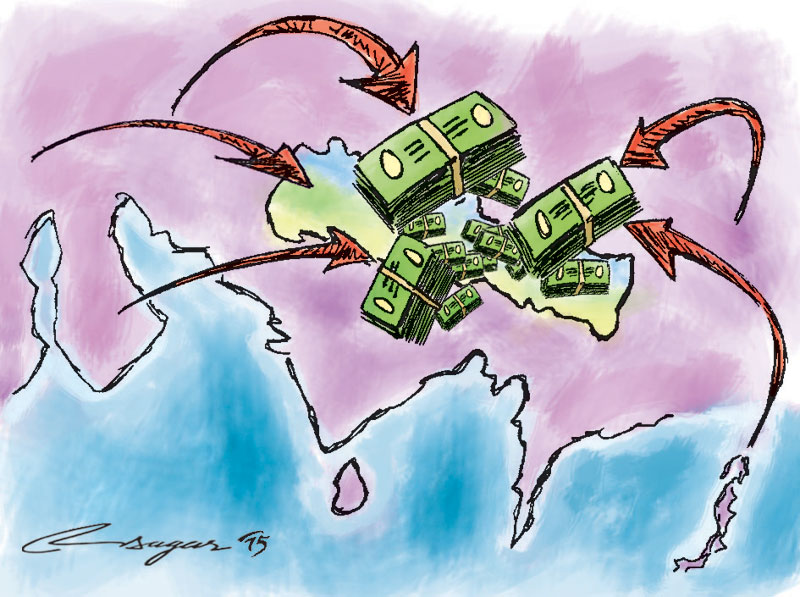Deposit at BFIs surges by whopping 73pc
Kathmandu, March 18
Deposit in the banking sector surged by 73 per cent in the first seven months of the current fiscal year, as inflow of money sent by Nepalis working abroad continued to increase.
Banking sector drew deposits of around Rs 143.42 billion in the period between mid-July and mid-February, as against
Rs 82.74 billion in the same period last fiscal year, shows the latest Macroeconomic Report of Nepal Rastra Bank (NRB), the central bank.
One of the major reasons for the surge in deposits is higher remittance income generated by the country.
In the seven-month period, Nepalis working abroad sent home Rs 375.15 billion, up 16.9 per cent than in the same period last fiscal year.
Most of the money that entered the country from abroad was parked at commercial banks, shows the NRB report.
Deposit of commercial banks grew by Rs 127.37 billion in the seven-month period, as against Rs 81.20 billion in the same period of the last fiscal year. With the addition of this fresh fund, the total deposit of commercial banks stood at Rs 1.58 trillion in mid-February.
In the same period, development banks were able to attract Rs 10.76 billion in fresh deposits. In the first seven months of the last fiscal year, deposits of Class ‘B’ financial institutions had shrunk by Rs 3.32 billion.
Also, Rs 5.29 billion in fresh deposits were parked at finance companies in the first seven months of the current fiscal year. In the same period of the last fiscal, Class ‘C’ financial institutions had seen deposit growth of Rs 2.10 billion.
Deposit growth had decelerated in the last fiscal year, as remittance income coming into the country via formal channel had taken a dip. At that time, authorities said, huge chunk of money collected from Nepalis employed abroad was not sent directly to the country, but used to buy gold abroad. This gold, they said, was then smuggled into the country, while money handed over by migrant workers abroad was extended to beneficiaries here directly by local agents.
However, remittance income from formal channel has gone up in this fiscal year, which is pushing up deposit level.
While deposits are going up, banks and financial institutions (BFIs) are finding it difficult to find borrowers. This led lending growth to fall by 32.90 per cent in the first seven months of the current fiscal year. Credit growth fell in the seven-month period as earthquakes of April and May, and supply disruptions along Nepal-India border points reduced demand for loans.
This has created mismatch in deposit and credit growth, which has left the banking sector flush with excess liquidity.






